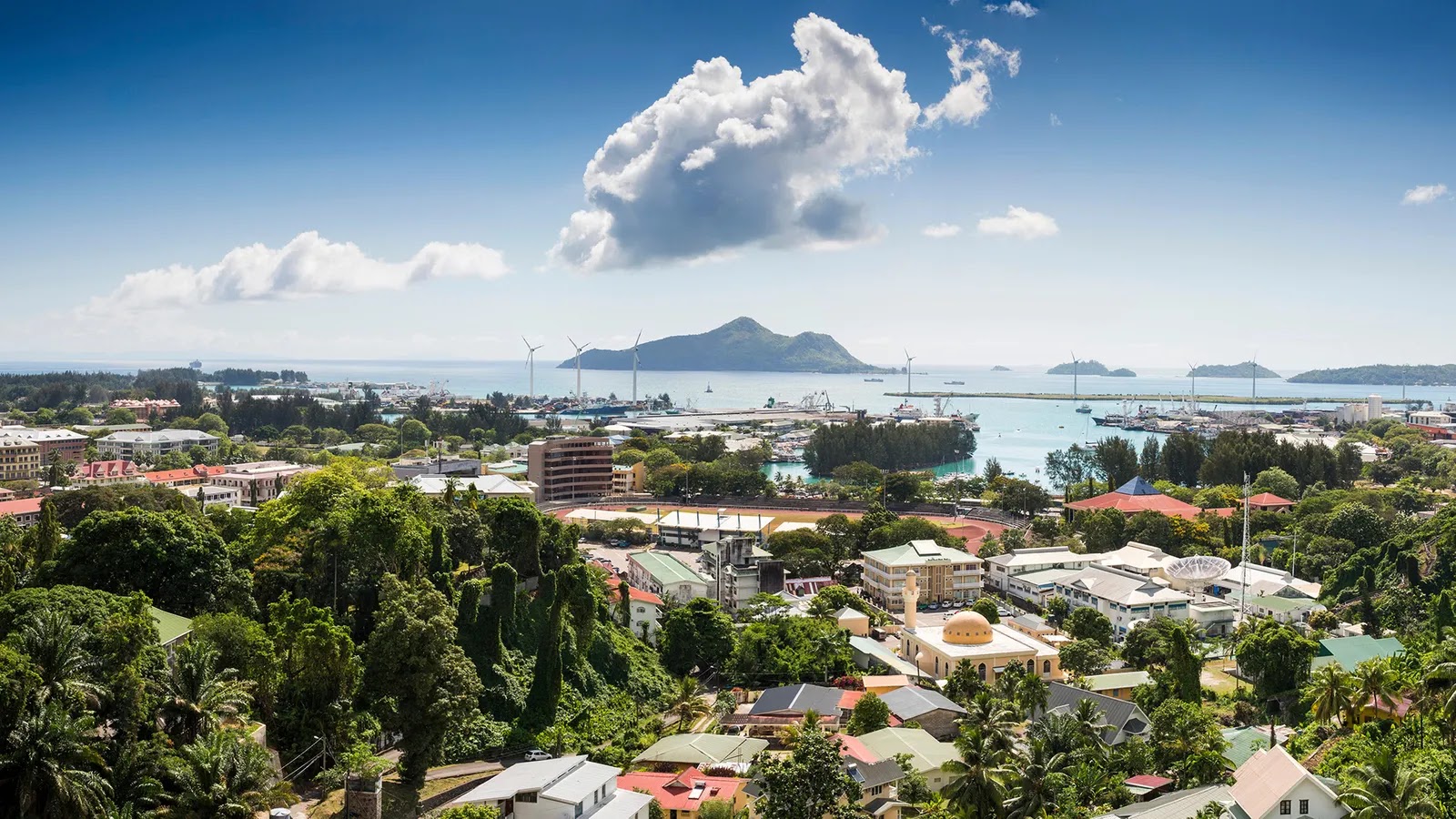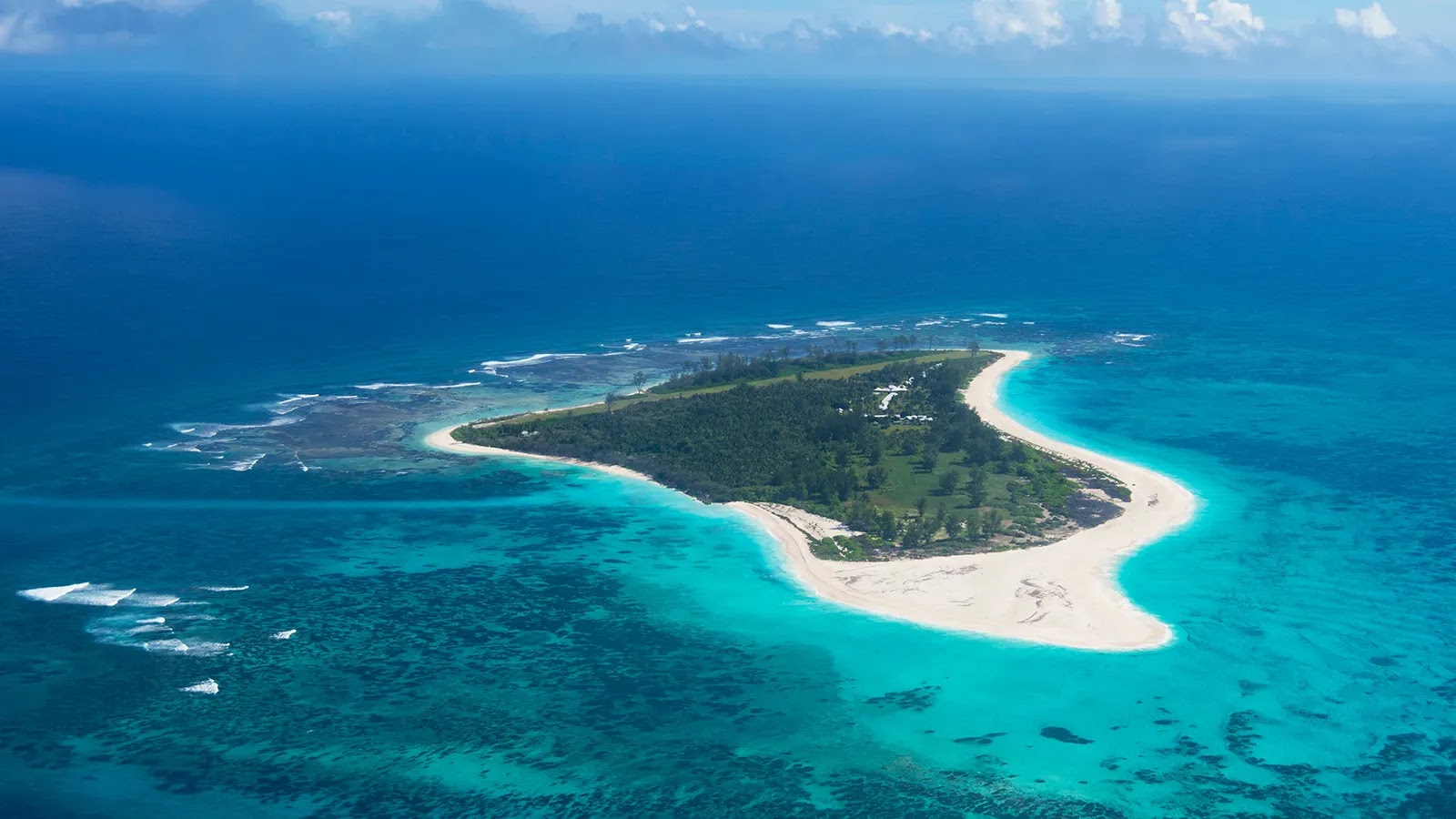Built
on land reclaimed from the sea, Seychelles' tiny capital city can't get any
bigger – but with a vibrant culture and fascinating history, it doesn't need
to.
In
the blink of an eye, I was flying over an unending ocean en way to the
Seychelles. The next moment, the plane's window was filled with dark granite
cliffs spinning in and out of the clouds, evoking all the gloomy mystery of
ships lost at sea. Because there appeared to be such little space between the
two, I became certain that the plane was about to crash into the lake or into a
mountain.
The
Seychelles is a 115-island archipelago, a majestic confluence of sea and land
set against a sky of incomparable blues. Everything appears to happen on a vast
scale here, from the towering volcanic spine on Mahé's biggest island to the
1,800 kilometers of water that separate Mahé from mainland Africa.
Except
for Victoria, the Seychelles' small capital.
San
Marino or Vatican City, for example, or a handful of tiny Pacific Island
communities, are examples of smaller capitals around the world. Nonetheless, by
the standards of other national capitals, Victoria's population of roughly
30,000 is small.
If
there appears to be little area for an international airport along Mahé's tiny
coastal strip, there appears to be even less room for a capital city. Mahé is
under 20 square kilometers in size, and walking around the perimeter of the
city's narrow grid of streets would take less than ten minutes. Until the
ground becomes too steep, houses climb the surrounding hills.
Victoria's
ability to grow to this magnitude is due in large part to historical
geographical engineering.
"Half
of Victoria is reclaimed ground," observed George Camille, a well-known
Seychelles artist who was born and spent much of his life in Victoria.
"The sea used to be where the taxi stop is now."
For
such a small city, Victoria does a good job of telling the story of modern
Seychelles through its buildings and its tightly concentrated clamour. It is an
antidote to the popular Seychelles image of beaches and palm trees and a life
far from the world and its noise.
Victoria
has surprisingly deep roots in its narrow plot of soil. The French founded the
city in 1778, a time when the American Revolutionary War was raging, the penal
colony of Australia was still just an idea and much of Africa remained
untouched by Europeans. The new settlement – which was by all accounts a modest
place of timber-and-granite houses, an army barracks and pens for keeping
tortoises – was named, rather more grandly, L'Établissement du Roi (“the King’s
establishment”).
Little
was done to grow the new city, either by the French who first built it or the
British who took it over in 1811. It was a harbour, a port, a convenient
waystation en route to elsewhere. So small and unimportant was it that it took
the British 30 years to change the name to Victoria; they did so in 1841 to
commemorate the queen's royal marriage to Prince Albert.
Its
history was, for the most part, a minor affair for much of the 19th Century.
After heavy rains, an avalanche of mud and granite rained down upon the city on
12 October 1862; many were killed. In 1890, the Swiss-owned Hotel Equateur
opened, a precursor to the deluge of tourist business that would one day come
to define Seychelles.
Perhaps
the oldest extant building in Victoria is now, appropriately, the National
Museum of History. With its engaging mix of written information panels
and wall-to-ceiling displays, it tells the story of earliest colonial times,
the freeing of slaves and the resulting history of Creole culture. Many
established histories of the city speak of Victoria's (and Seychelles')
colonial history, understandably so as it was the French and the British who
would leave behind the architectural landmarks. But on 1 February 1835, 6,521
slaves were set free on Seychelles. The entire population at the time was just
7,500; nearly 90% of these were freed slaves and they would become the
foundation upon which a Creole nation was established.
Originally
built in 1885, formerly the building of the Supreme Court of Seychelles, the
museum was restored in 2018 and remains a light and airy structure of wooden
shutters and soaring ceilings surrounded by a palm-filled garden. It occupies
the corner of Independence Avenue and Francis Rachel Street.
In
the heart of this intersection and visible from the museum grounds is one of
Victoria's more curious monuments: a miniature replica of the clocktower known
as Little Ben that stands on Vauxhall Bridge Road in London. It was brought to
Victoria in 1903 and serves as a suitably diminutive signpost for a city that
can never grow any bigger.
The
"city" is a dense tangle of automobiles and people, horns and
brilliant fabrics inside the tightly packed streets and lanes that make up
Victoria's genuine hub. The city becomes a mix of yelling fishmongers and fresh
goods ranging from coconuts and plantains to vanilla pods and chiles around the
covered Sir Selwyn Selwyn-Clarke Market. Old-school timber commerce warehouses
in fading colors share street frontage with a glass-walled casino on Albert
Street. The Domus, with its ornate balconied exterior, is nearby (a residence
for the church hierarchy, built in 1934). The Hindu Sri Navasakthi Vinyagar
Temple rises among the modern structures on Quincy Street.
"People
think Seychelles is all about beaches," said Connie Patel, local trader,
amateur historian and lifelong Victorian. "And, of course, the beaches are
important. But everything from Seychelles is here. There aren't many roads here
on Mahé; nearly all of them pass through Victoria. If you want to see where
ordinary Seychellois come to do business away from tourism, Victoria is where
it happens. It's an essential part of the Seychelles story."
Resident
Geetika Patel, agreed: "Victoria is a window on the real Seychelles. It
can be loud and messy and we all complain about the traffic. But this is modern
Seychelles. Look around you. It's a melting pot of faces and architecture that
tells you a lot about who we are. Listen, and you'll hear everyone talking in
Creole. You can't say you understand Seychelles unless you've been here."
Up
the hill, above the city and off Revolution Avenue, Marie-Antoinette Restaurant
occupies an old home where, in the 1870s, Welsh-American journalist and
explorer Henry Morton Stanley stayed for a month on his way back from Africa
and his celebrated encounter with Dr David Livingstone. Stanley had been sent
by a US newspaper to find Livingstone, who had lost contact with the outside
world years earlier; it was at their first meeting on this trip that Stanley
uttered the now-famous words, "Dr Livingstone, I presume?". Upon his
arrival in Seychelles on his way home, Stanley missed a French postal ship by a
day and was marooned in Seychelles for a month while he waited for passage back
to Europe. Built entirely of wood, sporting towers and turrets, the building is
yet another signpost to a little-known past.













0 Comments